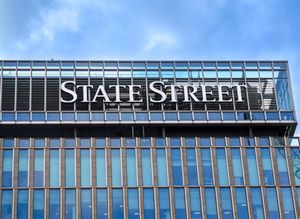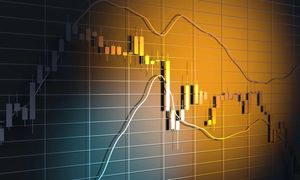
Government and sustainable technology solutions company KBR (NYSE: KBR) missed Wall Street’s revenue expectations in Q2 CY2025, but sales rose 5.2% year on year to $1.95 billion. The company’s full-year revenue guidance of $8 billion at the midpoint came in 7.3% below analysts’ estimates. Its non-GAAP profit of $0.91 per share was 3% above analysts’ consensus estimates.
Is now the time to buy KBR? Find out by accessing our full research report, it’s free.
KBR (KBR) Q2 CY2025 Highlights:
- Revenue: $1.95 billion vs analyst estimates of $2.09 billion (5.2% year-on-year growth, 6.8% miss)
- Adjusted EPS: $0.91 vs analyst estimates of $0.88 (3% beat)
- Adjusted EBITDA: $242 million vs analyst estimates of $230 million (12.4% margin, 5.2% beat)
- The company dropped its revenue guidance for the full year to $8 billion at the midpoint from $8.9 billion, a 10.1% decrease
- Management reiterated its full-year Adjusted EPS guidance of $3.83 at the midpoint
- EBITDA guidance for the full year is $970 million at the midpoint, in line with analyst expectations
- Operating Margin: 9.9%, in line with the same quarter last year
- Free Cash Flow Margin: 10.4%, up from 8.6% in the same quarter last year
- Backlog: $16.7 billion at quarter end, in line with the same quarter last year
- Market Capitalization: $5.91 billion
Company Overview
Known for projects like the construction of Guantanamo Bay, KBR provides professional services and technologies, specializing in engineering, construction, and government services sectors.
Revenue Growth
A company’s long-term performance is an indicator of its overall quality. Any business can put up a good quarter or two, but the best consistently grow over the long haul. Regrettably, KBR’s sales grew at a mediocre 6.8% compounded annual growth rate over the last five years. This wasn’t a great result compared to the rest of the industrials sector, but there are still things to like about KBR.

Long-term growth is the most important, but within industrials, a half-decade historical view may miss new industry trends or demand cycles. KBR’s annualized revenue growth of 9.9% over the last two years is above its five-year trend, suggesting its demand recently accelerated. 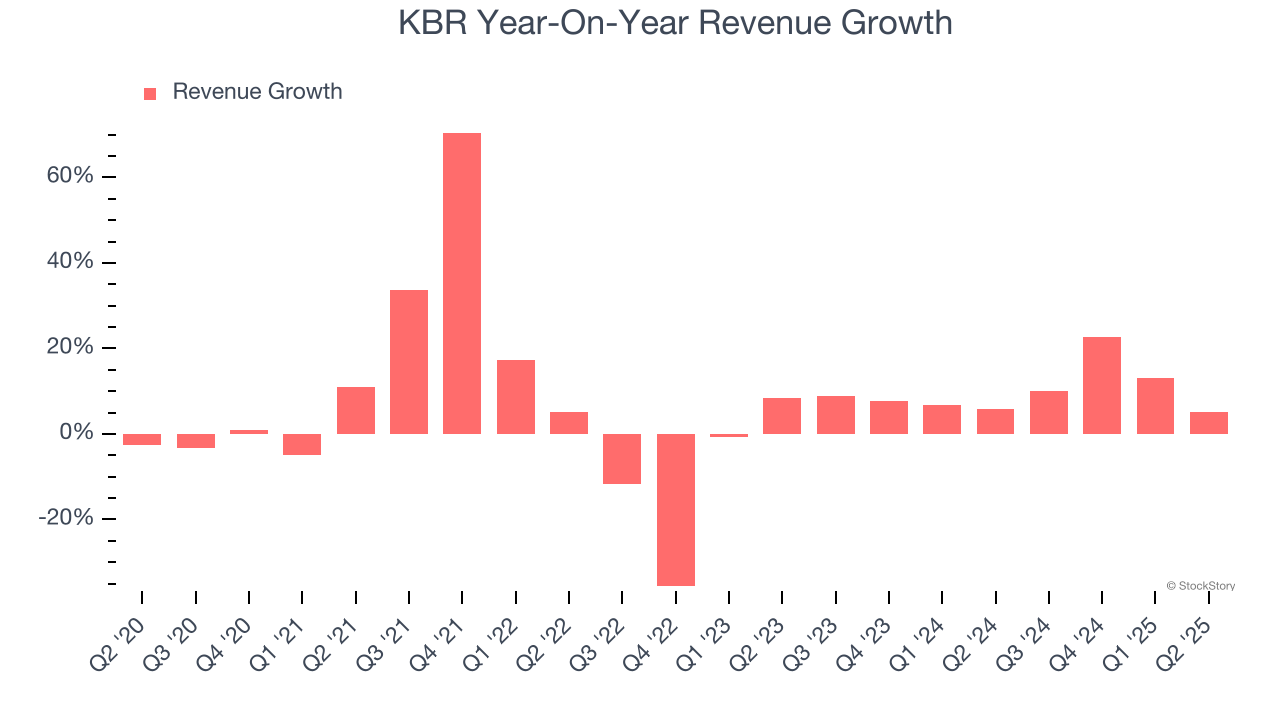
We can dig further into the company’s revenue dynamics by analyzing its backlog, or the value of its outstanding orders that have not yet been executed or delivered. KBR’s backlog reached $16.7 billion in the latest quarter and averaged 3.9% year-on-year growth over the last two years. Because this number is lower than its revenue growth, we can see the company fulfilled orders at a faster rate than it added new orders to the backlog. This implies KBR was operating efficiently but raises questions about the health of its sales pipeline. 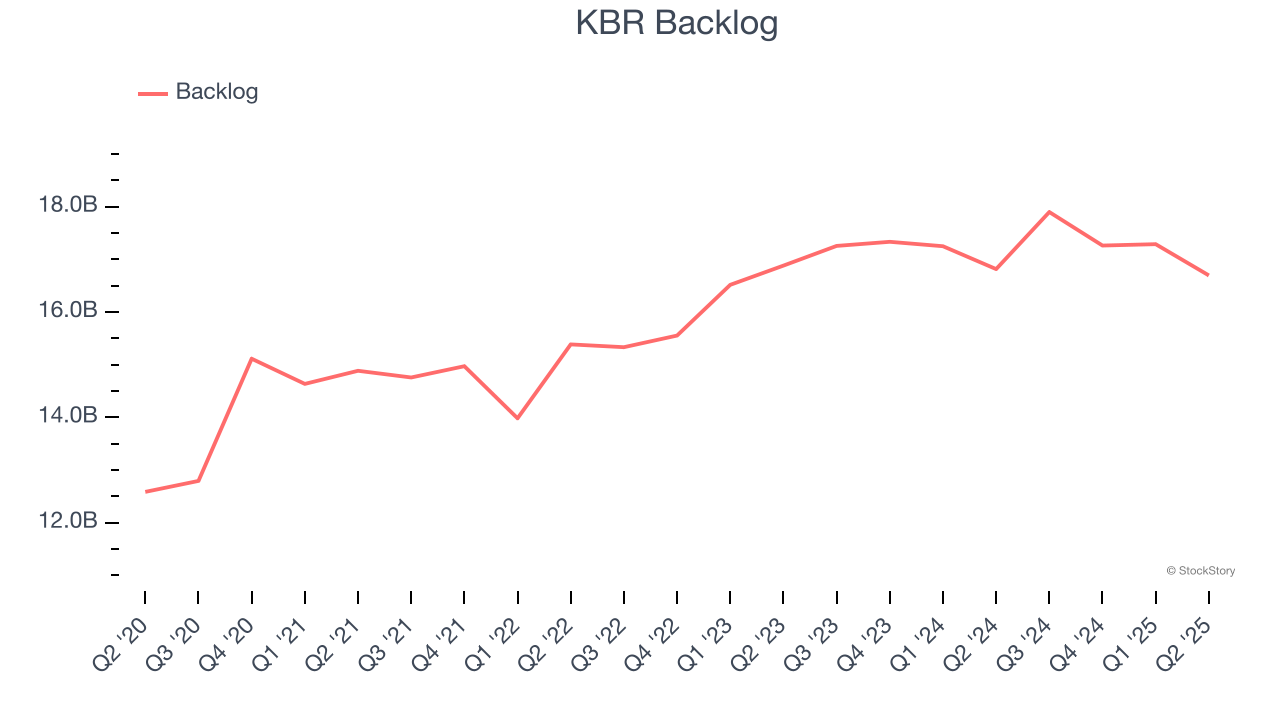
This quarter, KBR’s revenue grew by 5.2% year on year to $1.95 billion, missing Wall Street’s estimates.
Looking ahead, sell-side analysts expect revenue to grow 9.2% over the next 12 months, similar to its two-year rate. This projection is noteworthy and suggests the market sees success for its products and services.
Here at StockStory, we certainly understand the potential of thematic investing. Diverse winners from Microsoft (MSFT) to Alphabet (GOOG), Coca-Cola (KO) to Monster Beverage (MNST) could all have been identified as promising growth stories with a megatrend driving the growth. So, in that spirit, we’ve identified a relatively under-the-radar profitable growth stock benefiting from the rise of AI, available to you FREE via this link.
Operating Margin
Operating margin is an important measure of profitability as it shows the portion of revenue left after accounting for all core expenses – everything from the cost of goods sold to advertising and wages. It’s also useful for comparing profitability across companies with different levels of debt and tax rates because it excludes interest and taxes.
KBR was profitable over the last five years but held back by its large cost base. Its average operating margin of 6.2% was weak for an industrials business.
On the plus side, KBR’s operating margin rose by 6.3 percentage points over the last five years, as its sales growth gave it operating leverage.
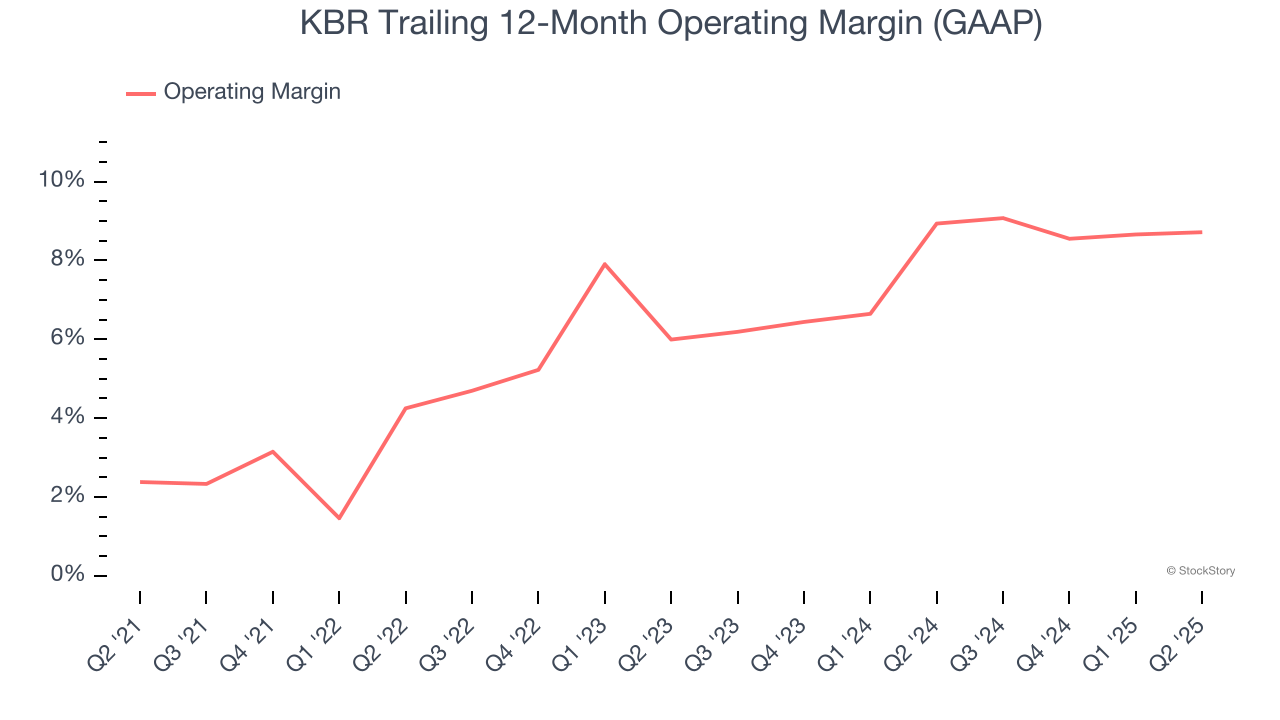
In Q2, KBR generated an operating margin profit margin of 9.9%, in line with the same quarter last year. This indicates the company’s overall cost structure has been relatively stable.
Earnings Per Share
Revenue trends explain a company’s historical growth, but the long-term change in earnings per share (EPS) points to the profitability of that growth – for example, a company could inflate its sales through excessive spending on advertising and promotions.
KBR’s EPS grew at a spectacular 16.6% compounded annual growth rate over the last five years, higher than its 6.8% annualized revenue growth. This tells us the company became more profitable on a per-share basis as it expanded.
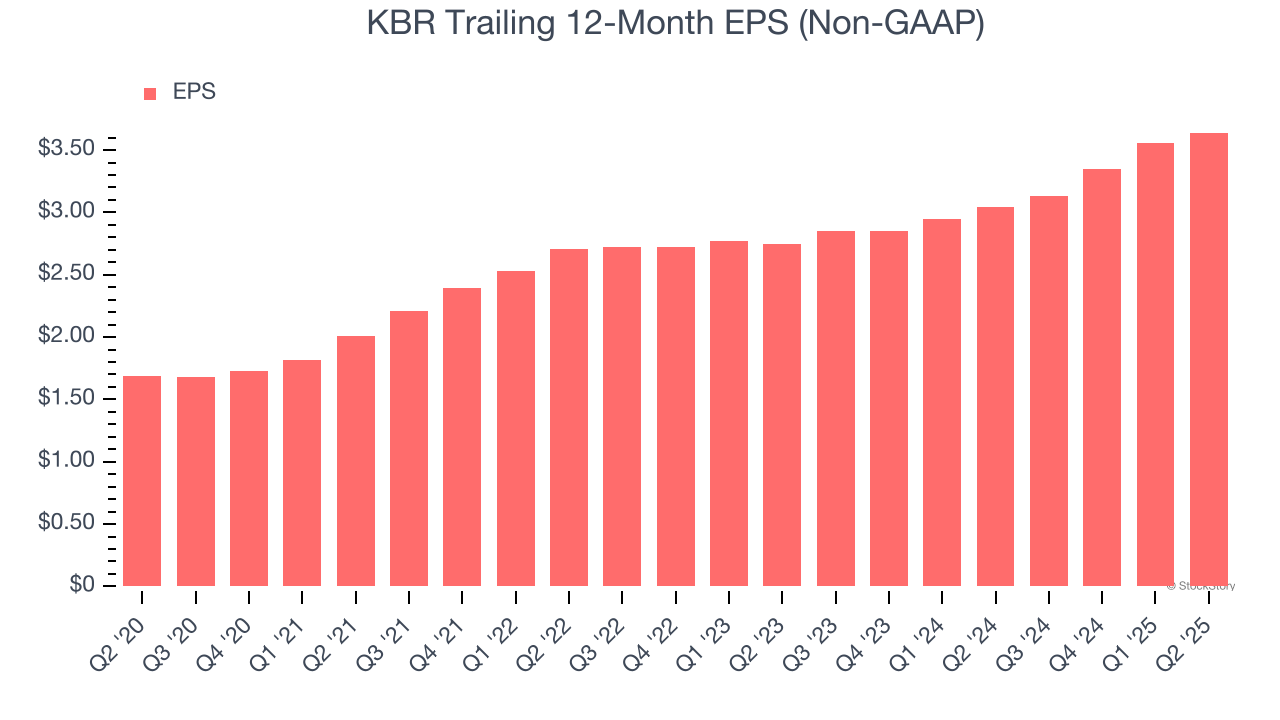
Diving into the nuances of KBR’s earnings can give us a better understanding of its performance. As we mentioned earlier, KBR’s operating margin was flat this quarter but expanded by 6.3 percentage points over the last five years. On top of that, its share count shrank by 9.2%. These are positive signs for shareholders because improving profitability and share buybacks turbocharge EPS growth relative to revenue growth. 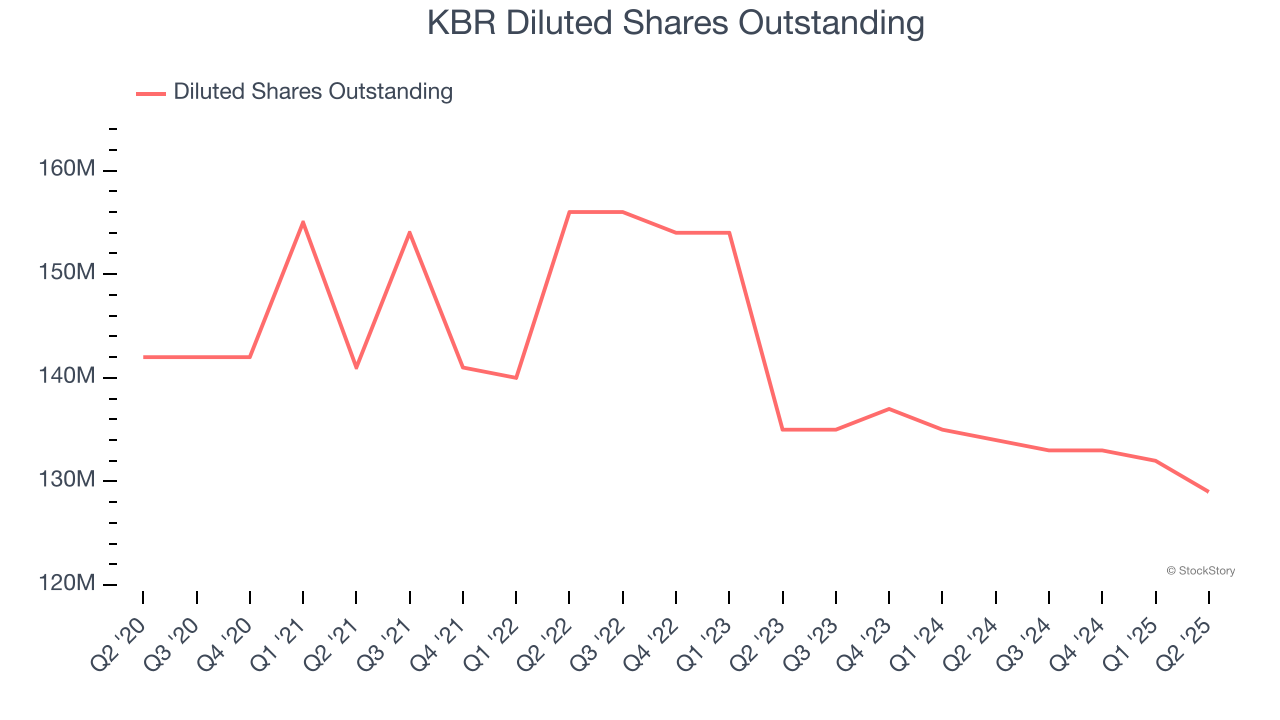
Like with revenue, we analyze EPS over a shorter period to see if we are missing a change in the business.
For KBR, its two-year annual EPS growth of 15% was lower than its five-year trend. We still think its growth was good and hope it can accelerate in the future.
In Q2, KBR reported EPS at $0.91, up from $0.83 in the same quarter last year. This print beat analysts’ estimates by 3%. Over the next 12 months, Wall Street expects KBR’s full-year EPS of $3.64 to grow 5.3%.
Key Takeaways from KBR’s Q2 Results
We enjoyed seeing KBR beat analysts’ EBITDA expectations this quarter. We were also glad its full-year EBITDA guidance was in line with Wall Street’s estimates. On the other hand, its full-year revenue guidance missed and its revenue fell short of Wall Street’s estimates. Overall, this quarter could have been better. The stock remained flat at $45.50 immediately following the results.
KBR didn’t show it’s best hand this quarter, but does that create an opportunity to buy the stock right now? We think that the latest quarter is only one piece of the longer-term business quality puzzle. Quality, when combined with valuation, can help determine if the stock is a buy. We cover that in our actionable full research report which you can read here, it’s free.

